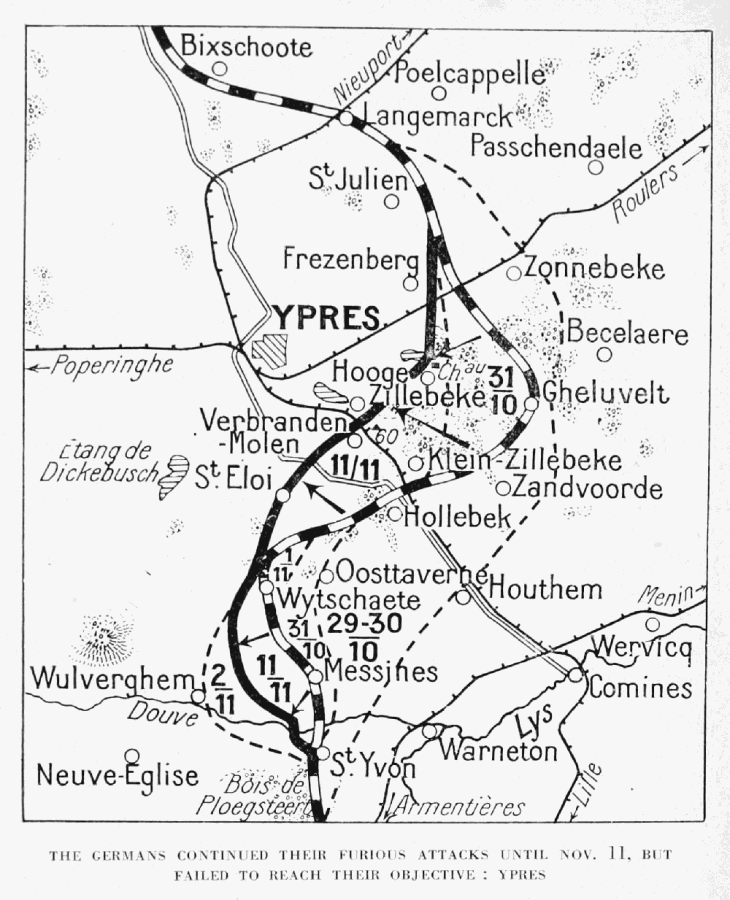10th November 1914
Like a series of hurricanes, the battles of La Bassée and Armentiéres had blown themselves into the battle of Messines and they all culminated in what was developing now: the First Battle of Ypres. Really they’re just one long series of German attacks and British defence and piecemeal counterattacks, while the French continued to attack where they could, with huge resulting losses on all sides.
We are witnessing the last gasps of the British Expeditionary Force. Only the trenches, the one thing we most associate with the horrors of World War One, saved them from utter annihilation.
Poor Frank has now been living in shallow, poorly dug, filthy trenches for a week. The trenches at the beginning of the war were little more than holes in the ground. In Ypres, where the waterline was shallow, they had to build up breastworks on top of the ground. Sometimes they dug along hedgerows or tree lines and pulled the hedges down to form the breastwork. Most of the time sandbags and fascines of twigs were heaved out into no mans land to form a defensive line.
Dug outs for the men were practically non-existent. Some holes in the ground were made and covered over in sheets of corrugated iron, stripped from farms here and there. The farms and outbuildings themselves tended to house the HQs dotted along the frontline at this point in the war.
The Dorsets reported another quiet day with shelling throughout the night.
